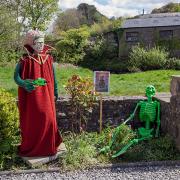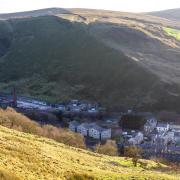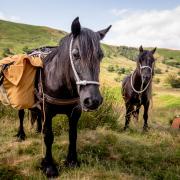A daredevil photographer combines his love of photography and paragliding to creat some remarkable landscapes

In a world obsessed with indulgent ‘selfies’ photographer Stuart Holmes can claim the high ground – quite literally, as you can see from these extraordinary shots.
Until 2009 Stuart was an exploration geologist, working in fascinating locations worldwide. The nature of the task meant there were plenty of opportunities for adventure.
Invariably, they included mountains, climbing or paragliding and occasionally all three at once. In 2005 accompanied by a group of friends, he reached the summit of Everest from the Tibet side as part of a self-funded and self-led expedition. Four years later, he climbed the iconic Nepalese mountain Ama Dablam before floating back down to Base Camp in just ten minutes on a mini-paraglider.
Wherever he has gone, Stuart has always carried a camera and, running alongside the geological work, he has had a landscape and adventure sports photography business for around 20 years.

He has exhibited in the UK and abroad and his photographs have been widely published in books and magazines. Based in Keswick, he has now shared his knowledge by producing a photography guide book.
He said: ‘I have experimented with self portraits whilst flying, the view from up high in the wing looking straight down with the glider lines leading the eye straight to the pilot is very effective, especially when combined with a spectacular backdrop.
‘I have rigged up an extra line in my wing that I attach my camera to with a specially made harness. This line goes up from me to a pulley near the top of my glider and then back down to me. During stable flight I can pull on one end and hoist the camera up towards the canopy itself.
‘To stop the camera swinging wildly about I have two short lines with clips attached to the camera strap lugs that act like side lines which I clip onto glider lines to run up and down. I use a remote control to trigger the shutter.’

He makes it sound easy but it is far from it. ‘Carrying and operating a heavy SLR camera in the air is not ideal when trying to maintain control of the wing - not hitting anything is a priority and essential to my health and continued enjoyment of life.
‘Occasionally, the air is too rough and no matter how spectacular the scene around, I dare not release the controls to take up my camera for fear of losing control.’
Stuart learnt to paraglide in the Alps in 1987. ‘Right from the start I realised the huge potential for taking unusual landscape images from this privileged viewpoint normally restricted to the birds.
‘A paraglider is typically only flying at around 20mph which gives you a good amount of control and time to compose shots. The downside is you are at the mercy of the wind and air currents as well as your own ability to use those air currents to stay up and move around.’

It’s certainly one way to get a high.
Stuart’s ground rules
Stuart Holmes’ new book, Photographing the Lake District, keeps its feet firmly on the ground - you don’t need to be a darevevil paraglider.
This is a comprehensive guide to the most beautiful places to take pictures and how to take them.
It is a wonderfully illustrated book with 360 high quality photographs, 70 locations and hundreds of viewpoints. Each chapter describes the local history, literary and geological features and there are detailed directions and maps along with satnav information.
Photographing the Lake District by Stuart Holmes is published by Fotovue and prices £25. For more information go to www.fotovue.com



























